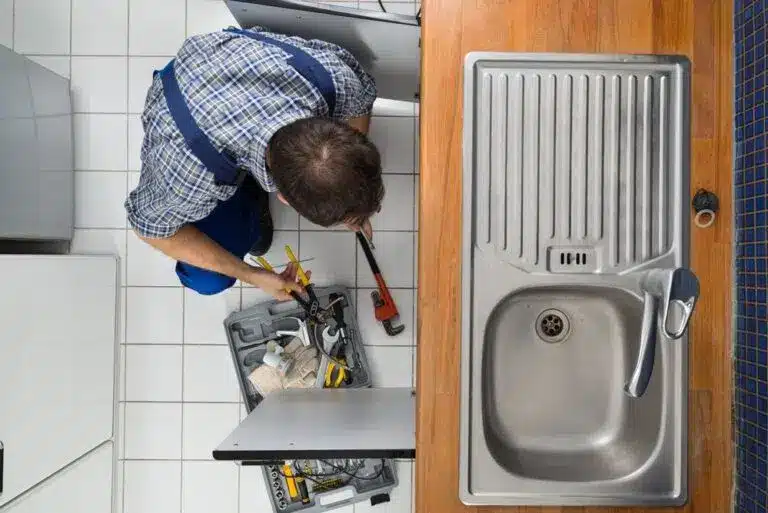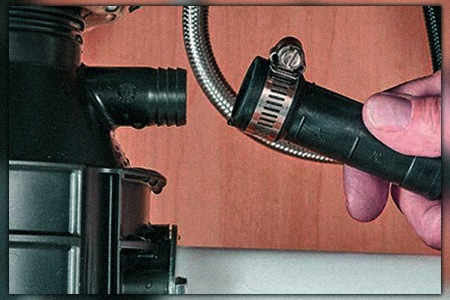Clear Instructions for Repairing a Leaky Waste Disposal
Clear Instructions for Repairing a Leaky Waste Disposal
Blog Article
Just how do you actually feel in regards to Why Is ?

Waste disposal unit are essential cooking area appliances that aid in taking care of food waste effectively. Nonetheless, a leaking garbage disposal can be a discouraging and messy trouble to deal with. Fortunately, several leaks can be fixed quickly with a couple of easy actions. In this write-up, we will review how to deal with a leaking waste disposal unit efficiently.
Introduction
Waste disposal unit are mounted under kitchen sinks and are developed to shred food waste right into smaller pieces, enabling it to pass through the pipes system easily. While these gadgets are usually reputable, leakages can take place over time because of damage, loose links, or damages to the unit.
Step-by-Step Guide to Repairing a Dripping Waste Disposal Unit
Switch off the Power
Before trying any kind of fixings, ensure that the power to the garbage disposal system is switched off to prevent the risk of electrical shock.
Locate the Leakage
Recognize the exact area of the leak and establish the cause
Tighten up Connections
Make use of a wrench to tighten any kind of loose connections between the disposal unit and the plumbing system.
Replace Seals or Gaskets
If the leakage results from used seals or gaskets, get rid of the old elements and change them with new ones.
Patching Fractures or Holes
For fractures or holes in the disposal system, use epoxy or an ideal patching product to secure the broken location.
Determining the Source of the Leak
Before attempting to repair a leaking garbage disposal, it is essential to identify the source of the leak. This can typically be done via aesthetic inspection or by conducting easy tests.
Visual Inspection
Examine the garbage disposal unit carefully for any kind of indicators of water leakage. Pay close attention to locations around seals, gaskets, and link factors.
Checking for Leaks
One way to check for leaks is by running water through the disposal device and looking for any visible indications of leakage.
Common Sources Of Leaks in Trash Disposals
Worn Seals and Gaskets
Seals and gaskets play an important role in preventing water from dripping out of the waste disposal unit. In time, these components can wear away, causing leaks around the disposal unit.
Loose Links
The connections between the waste disposal unit and the plumbing system can come to be loosened in time, causing water to leak out during operation.
Splits or Holes in the Disposal System
Physical damage to the waste disposal unit, such as fractures or holes in the real estate, can likewise cause leaks.
Devices and Products Needed for Fixing a Dripping Garbage Disposal
Prior to beginning the fixing procedure, collect the required devices and materials, consisting of a screwdriver, adjustable wrench, plumber's putty, substitute seals or gaskets, and epoxy or patching material for fixing splits or holes.
Checking the Garbage Disposal After Repair Service
Once the repair work is full, examine the garbage disposal by running water with it to make certain that the leak has actually been resolved.
Preventive Upkeep Tips to Avoid Future Leaks
To avoid future leaks, it is important to perform routine maintenance on your garbage disposal. This consists of keeping it clean, staying clear of putting non-food items or tough items down the disposal, and occasionally looking for leakages or various other problems.
Conclusion
To conclude, fixing a leaking garbage disposal is a fairly simple procedure that can be finished with basic tools and materials. By adhering to the actions described in this post and exercising preventative upkeep, you can maintain your waste disposal unit in good working problem and prevent expensive repairs in the future.
HERE’S HOW TO FIX YOUR GARBAGE DISPOSAL
WHAT TO DO IF SOMETHING IS STUCK IN YOUR GARBAGE DISPOSAL
If the impeller won’t turn, there’s probably something stuck in the disposal. It could be a steak bone or peach pit, although plumbers report pulling all sorts of inappropriate objects out of disposals, such as bottle caps or aluminum foil. Make sure power to the disposal is off, and look inside to see if you can see the source of the jam.
Never stick your fingers in a disposal. Pull out anything you see with tongs or pliers.
If the disposal still won’t work, it may be time to call a plumber or consider buying a new disposal. GEM Plumbing & Heating is here for all of your garbage disposal needs.
WHAT TO DO IF YOUR GARBAGE DISPOSAL DRAIN IS CLOGGED
Take everything out from underneath your sink and put a bucket or other container under your disposal to catch any water that drains out. Disconnect your disposal from the power supply. If it’s plugged into a wall outlet, unplug it. If it’s hardwired into an electrical box, go to the electrical panel and turn off the breaker for the disposal. Pour ¼ cup of baking soda into the drain, followed by ½ cup of white vinegar. Give the solution a few minutes to fizz and do its work. Look into the disposal with a flashlight to see if you can see an object that might be causing the clog. If you see it, remove it using tongs or pliers. MORE TIPS ON DEALING WITH A CLOGGED GARBAGE DISPOSAL
Never use drain cleaner in a garbage disposal. It can damage the plastic parts inside the disposal. You can also be splashed with the caustic liquid while working to clear the clog. Beware! Never stick your fingers into a garbage disposal. Trust us — not a good idea. In many instances, your dishwasher drains through your garbage disposal. This allows the disposal to grind any large food particles that may be drained out of your dishwasher. There are some jurisdictions, however, where the plumbing code prohibits such a connection. WHAT TO DO WHEN YOUR DISHWASHER DRAINS THROUGH THE DISPOSAL
Run some water in the sink so your plunger has at least a ½-inch of water to create a seal and plunge vigorously up and down several times. You may need to repeat this several times. Run hot water down the drain to clear any residue that remains.

Hopefully you enjoyed reading our section on Why Is . Thank you for finding the time to read through our blog. Sharing is nice. Helping others is fun. Thank you for taking the time to read it.
Book Report this page